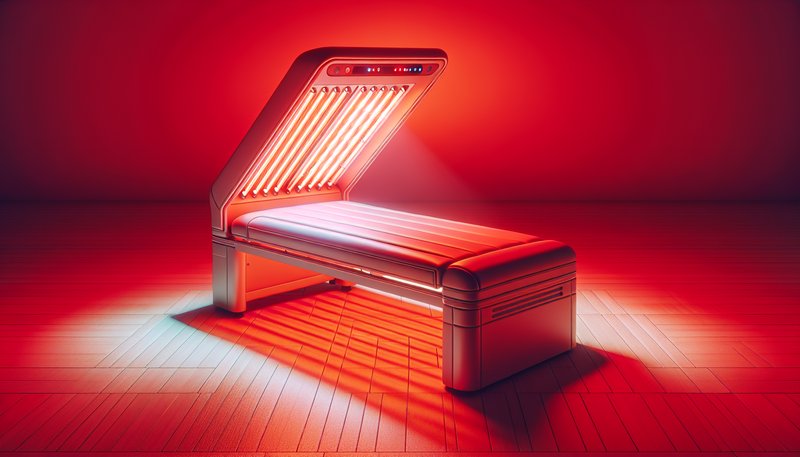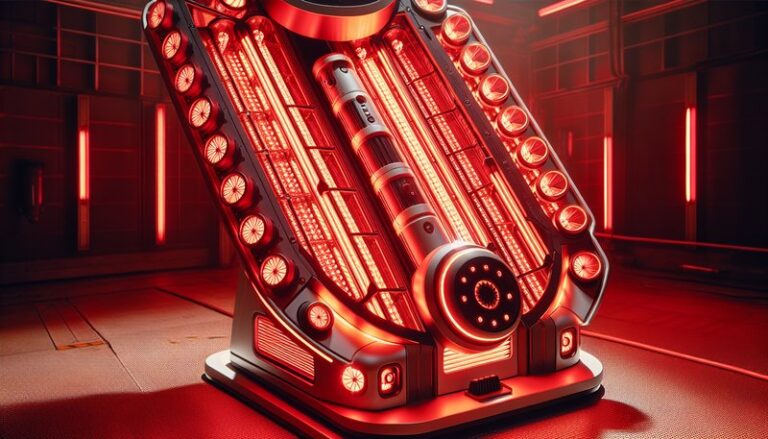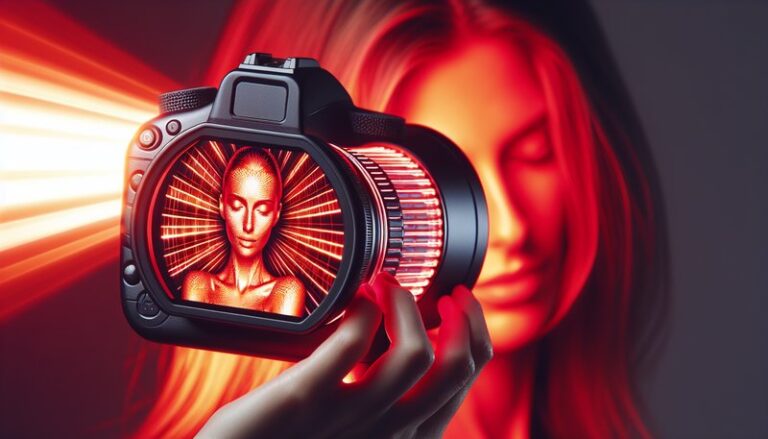What Is Red Light Therapy Bed?
Have you ever wondered how new technologies can improve your health and wellness? Among the innovations gaining popularity is the red light therapy bed, a treatment option that claims to harness the power of light for various benefits.
This article will provide an in-depth look at red light therapy beds, explaining what they are, their benefits, considerations before use, and alternatives available. By the end, you’ll have a clearer understanding of whether this treatment might be right for you.
Key Takeaways
- Red light therapy beds use specific wavelengths of light to promote healing and wellness.
- Benefits include improved skin health, reduced inflammation, and accelerated muscle recovery.
- Important considerations include skin type, session duration, and potential side effects.
What is a Red Light Therapy Bed?
Red light therapy beds are specialized devices equipped with light-emitting diodes (LEDs) that emit low-level wavelengths of red and near-infrared light. These beds are designed for use in both professional and at-home settings and are often used in spas, clinics, and personal wellness routines.
The science behind red light therapy involves photobiomodulation, a process where light photons stimulate cellular function. The therapy is believed to enhance healing, improve circulation, and promote cellular repair, making it a popular choice for those looking to experience a range of health benefits.
How Does It Work?
The light emitted from a red light therapy bed penetrates the skin and is absorbed by mitochondria in the cells. This absorption triggers a series of biochemical reactions that can increase energy production and accelerate healing processes. Users typically lie down in the bed for a specified duration, allowing the light to work effectively on their body.
Types of Red Light Therapy Beds
There are various models of red light therapy beds available on the market. Some are more portable and intended for home use, while others are professional-grade machines offering advanced features. Understanding the different models is crucial for determining which best meets your needs.
What are the Benefits of Red Light Therapy Beds?
Red light therapy beds offer a myriad of potential benefits that have attracted users seeking various health improvements. Here’s a closer look at some of the most notable advantages.
Improved Skin Health
Red light therapy is known for its ability to reduce wrinkles, fine lines, and other signs of aging. Studies have shown that exposing the skin to red light can boost collagen production, resulting in firmer, more youthful-looking skin.
Reduced Inflammation
Another significant benefit of red light therapy is its anti-inflammatory properties. Clinical research indicates that the treatment can help decrease inflammation in conditions such as arthritis and tendinitis, making it a useful option for managing chronic pain.
Accelerated Muscle Recovery
Athletes and fitness enthusiasts often turn to red light therapy beds for faster recovery post-exercise. The light can improve muscle repair times and reduce soreness, allowing for a quicker return to training and performance.
Enhanced Mood and Energy Levels
Exposure to red light is also linked to improved mood and energy. Many users report feeling more energized and positive after sessions, likely due to the increase in cellular energy production and blood flow.
Check this out Red Light Therapy for Weight Loss
Additional Benefits
Other potential benefits include improved sleep quality, reduced acne, and enhanced hair growth for those experiencing hair loss. The holistic impacts of red light therapy extend beyond the physical realm, influencing overall wellness.
Is it Possible to Achieve Results with a Red Light Therapy Bed?
Yes, many users report experiencing positive outcomes from regular sessions in a red light therapy bed. However, results can vary based on individual circumstances.
What are the Advantages of Using a Red Light Therapy Bed?
Using a red light therapy bed can be a straightforward process with several benefits:
- Convenience: Many offer at-home options, making it easy to incorporate into your routine.
- Non-Invasive: Red light therapy is a non-invasive treatment option that typically has minimal side effects.
- Customizable Protocols: Users can tailor their sessions based on specific needs and goals.
What are the Disadvantages of Using a Red Light Therapy Bed?
While generally safe, there are some disadvantages to consider:
- Initial Cost: High-quality therapy beds can be expensive for at-home use.
- Time Commitment: Achieving maximum benefits often requires consistent and regular use over time.
- Potential Skin Sensitivity: Some individuals may experience sensitivity to light, requiring caution.
What are the Things to Consider Before Using a Red Light Therapy Bed?
Before starting red light therapy, it’s important to consider several factors to maximize effectiveness and minimize risks.
Skin Type and Sensitivity
Different skin types may respond differently to red light therapy. Individuals with sensitive skin should consult a healthcare professional to ensure that the therapy is safe and effective for them.
Session Length and Frequency
Finding the right balance of session length and frequency is vital. Many experts recommend starting with short sessions, gradually increasing duration based on personal comfort and results.
Underlying Health Conditions
Individuals with pre-existing health conditions should consult their healthcare provider before beginning red light therapy to ensure there are no contraindications.
Added Considerations
Additional considerations might include understanding specific equipment capabilities, assessing the necessity for protective eyewear, and evaluating personal goals for the therapy.
What are the Alternatives to Using a Red Light Therapy Bed?
There are several alternative options available for those seeking similar benefits without using a red light therapy bed.
LED Face Masks
These portable devices target facial skin issues similarly to red light therapy beds but are designed for home use. They can help reduce signs of aging and improve skin texture.
Infrared Saunas
Infrared saunas use heat to promote circulation and detoxification and can offer similar wellness benefits. They also encourage relaxation, making them a popular choice for stress relief.
See the whole article Can Red Light Therapy Help Rosacea
Cold Laser Therapy
Another non-invasive approach is cold laser therapy, which uses low-level lasers to stimulate healing. This method can be particularly effective for pain management and injury recovery.
Additional Alternatives
Other alternatives could include topical treatments like serums with active ingredients for skin health or traditional practices like acupuncture, which also aim to improve well-being.
Conclusion: Is it Recommended to Use a Red Light Therapy Bed?
In conclusion, a red light therapy bed can be a beneficial addition to wellness routines for many people, offering various health and cosmetic benefits. However, it’s essential to consider your specific needs, consult with healthcare professionals, and explore all options to make an informed decision.
Frequently Asked Questions
How often should I use a red light therapy bed?
Typically, it is recommended to start with sessions 2-3 times a week and then adjust based on individual results and recommendations from a healthcare provider.
Are there any side effects?
Most users experience minimal side effects, but some may encounter temporary skin irritation or increased sensitivity. It’s important to monitor your body’s response and adjust accordingly.
Can anyone use red light therapy beds?
While generally safe, individuals with certain medical conditions, skin sensitivities, or those using specific medications should consult with a healthcare provider before using red light therapy beds.
How long does it take to see results?
Results can vary significantly from person to person. Some users may notice improvements within just a few sessions, while others may require several weeks of consistent use to experience noticeable changes.
What should I wear during a session?
Comfortable clothing is generally recommended, and some users choose to wear protective eyewear to safeguard their eyes, especially if their session involves full-body exposure.





